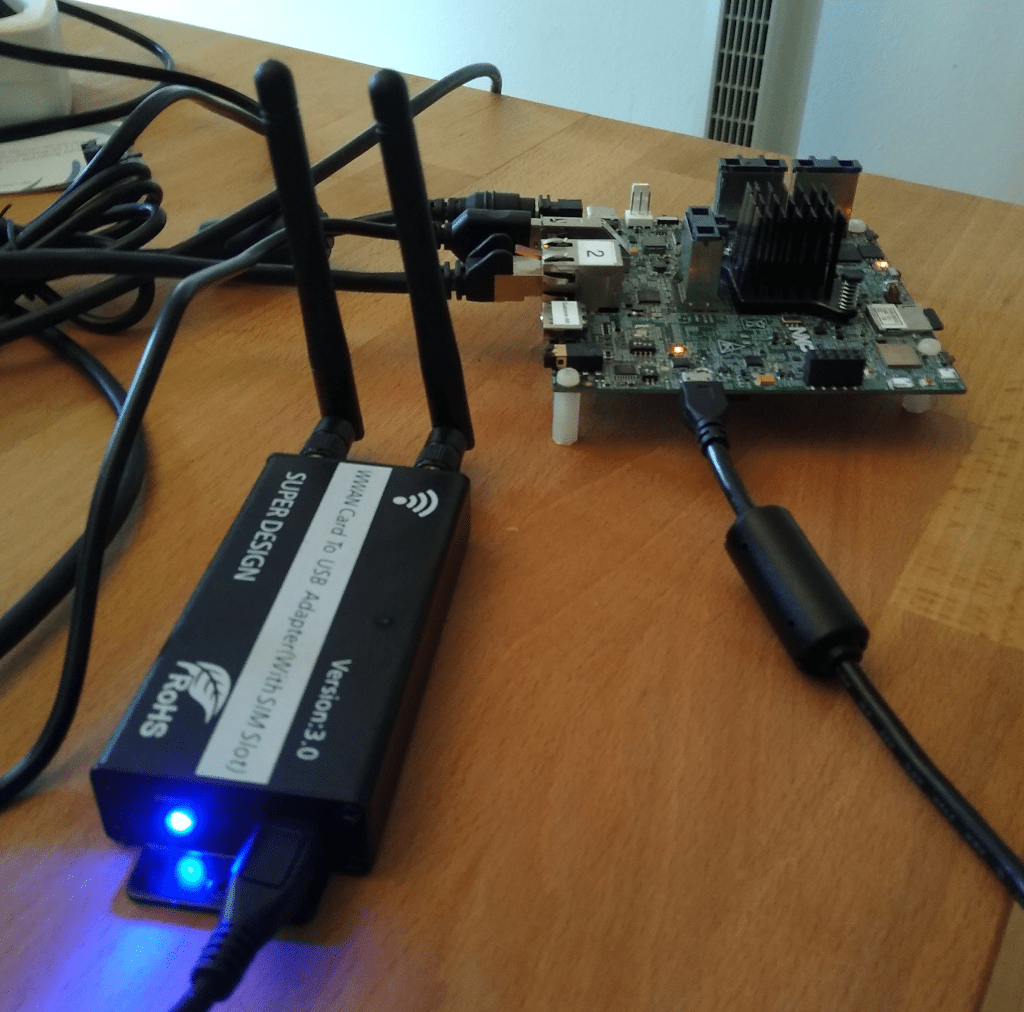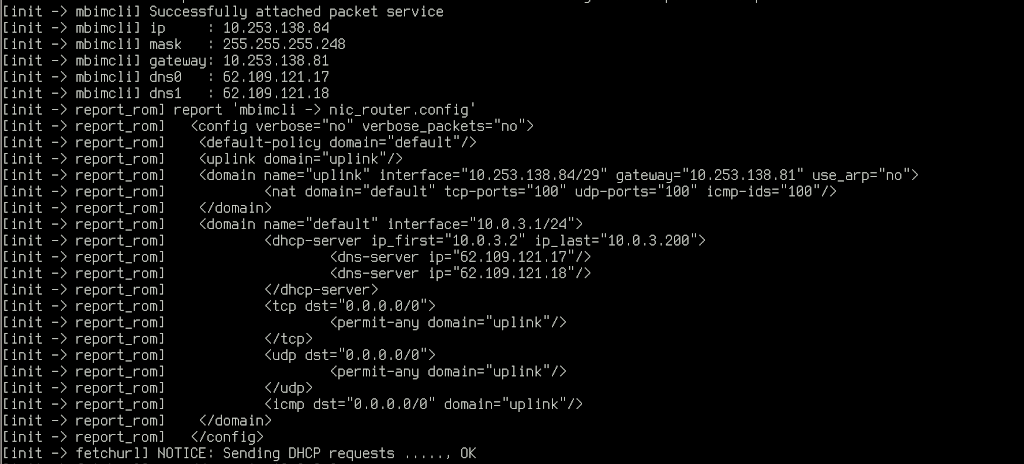LTE modem support for Genode
One of Genode's visions is to support smartphones in the no so distant future. After we took care of touchscreen input the second most important feature of a phone is to drive modems in order to provide network connectivity. Modern modems are usually connected via an M.2 slot to the SoC of the phone and because protocols like LTE have real-time demands ship their own real-time capable operating system.
The modem uses the M.2 USB lines that connect directly to the SoC's USB host controller, and therefore, a modem will show up as an USB device on the USB host. As a reference modem we ordered Huawei's ME906S LTE modem and an M.2 to USB adapter in order to connect the modem quickly to different test machines. The setup for our i.MX8 board can be seen below:

|
|
LTE modem connected to i.MX8 board
|
MBIM vs. QMI
In the past all modems used the Point-to-Point-Protocol for data connections, while the actual modem configuration (e.g., PIN entry, provider credentials) were configured via AT commands through a serial device exposed by the modem. Modern modems still support this feature set, but also offer more advanced options through different USB configuration profiles in order to support the high bandwidth requirements of 3G and above. Currently, there are two established standards present. The first is the Mobile Broadband Interface Model and the second is the Qualcomm Mobile Station Interface. While MBIM is a USB standard QMI is a proprietary standard developed by Qualcomm. Both MBIM and QMI use existing Ethernet over USB standards with an added control channel. MBIM is in fact the NCM protocol with an added signalling channel while QMI is the ECM protocol + signalling channel. The signalling channel is realized in both cases through a Wireless Mobile Communication Device where binary MBIM or QMI command packets can be transferred to the modem. So, for example, if you connect a modem to a Linux system and set the device configuration to the MBIM profile, two devices will appear: First, a wwan network interface, and second, a cdc-wdm device. Since, our modem supports the MBIM protocol, we will stick to MBIM in the following.
In order to configure the MBIM modem through cdc_wdm tools like libmbim are available that implement the actual MBIM protocol specification and can be used through command line tools.
MBIM modem support for Genode
For Genode's MBIM support two parts are required: First, the USB modem driver that implements NCM and WDM, and second, libmbim that implements the MBIM protocol and establishes a connection to the WDM device driver. For this to work we ported the MBIM, NCM, and WDM parts from the Linux kernel to Genode using the device driver environment and created a new USB driver called usb_modem_drv. The USB modem driver sends USB requests via Genode's USB session to the host controller driver and additionally offers two sessions: First, a Genode Nic-session that transfers Ethernet frames to the modem and second, a Terminal-session that directly connects to the WDM driver.
With the USB driver ready, we ported libmbim to Genode and adapted the mbimcli command to our needs. mbimcli wants to open /dev/cdc_wdm0, which we mapped through the vfs_terminal plugin to the Terminal session of our usb_modem_drv. mbimcli will in turn execute a packet-service-connection sequence and retrieve the connection settings (IP address, gateway, DNS server) from the device via MBIM commands (not DHCP). Currently, the connection settings are propagated by mbimcli in form of a Report that is consumed as configuration by Genode's NIC router component. In the report the modem is configured as "uplink" as can be seen below:

|
|
NIC router configuration
|
This way clients can connect to the NIC router and through the uplink to the LTE modem. As a side note, ARP to the gateway has to be explicitly disabled in this setup (use_arp="no").
With anything required for MBIM modems in place, we want to add support for more modems as well as QMI in the future.


 Sebastian Sumpf
Sebastian Sumpf